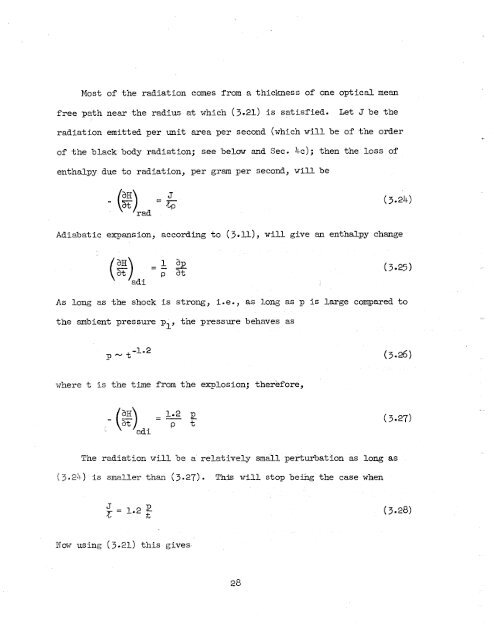Theory of the Fireball
Theory of the Fireball
Theory of the Fireball
Create successful ePaper yourself
Turn your PDF publications into a flip-book with our unique Google optimized e-Paper software.
Most <strong>of</strong> <strong>the</strong> radiation comes from a tnickness <strong>of</strong> one optical mean<br />
free patn near <strong>the</strong> radius at which ( 3.21) is satisfied. Let J be <strong>the</strong><br />
radiation emitted per unit area per second (which w ill be <strong>of</strong> <strong>the</strong> order<br />
<strong>of</strong> <strong>the</strong> black body radiation; see below and Sec. 4c) ; tnen <strong>the</strong> loss <strong>of</strong><br />
enthalpy due to radiation, per gram per second, will be<br />
J<br />
- = .ep<br />
Adizbatic expansion,<br />
(%)adi -<br />
As long as tne shock<br />
tne ambient pressure<br />
according to ( 3.11), will give an entnalpy change<br />
is strong, i.e.,<br />
pl, <strong>the</strong> pressure<br />
as long as p is large compared to<br />
behaves as<br />
vhere t is <strong>the</strong> time from <strong>the</strong> explosion; <strong>the</strong>rbfore,<br />
1.2 p<br />
,.- @)adi - p t<br />
Tine rzdia-tion will be a relatively smail perturbat ion as long as<br />
( j. 2h.) -is smaller Clan (3.27) . This wil stop be% <strong>the</strong> case when<br />
J P<br />
= 1.2 ,c<br />
28
















